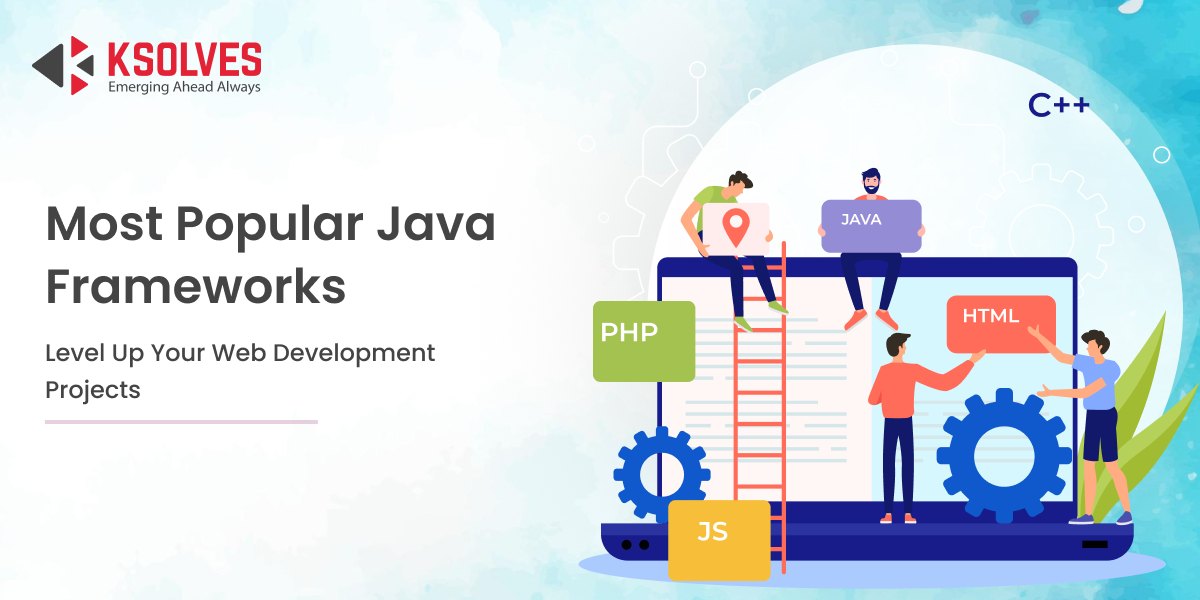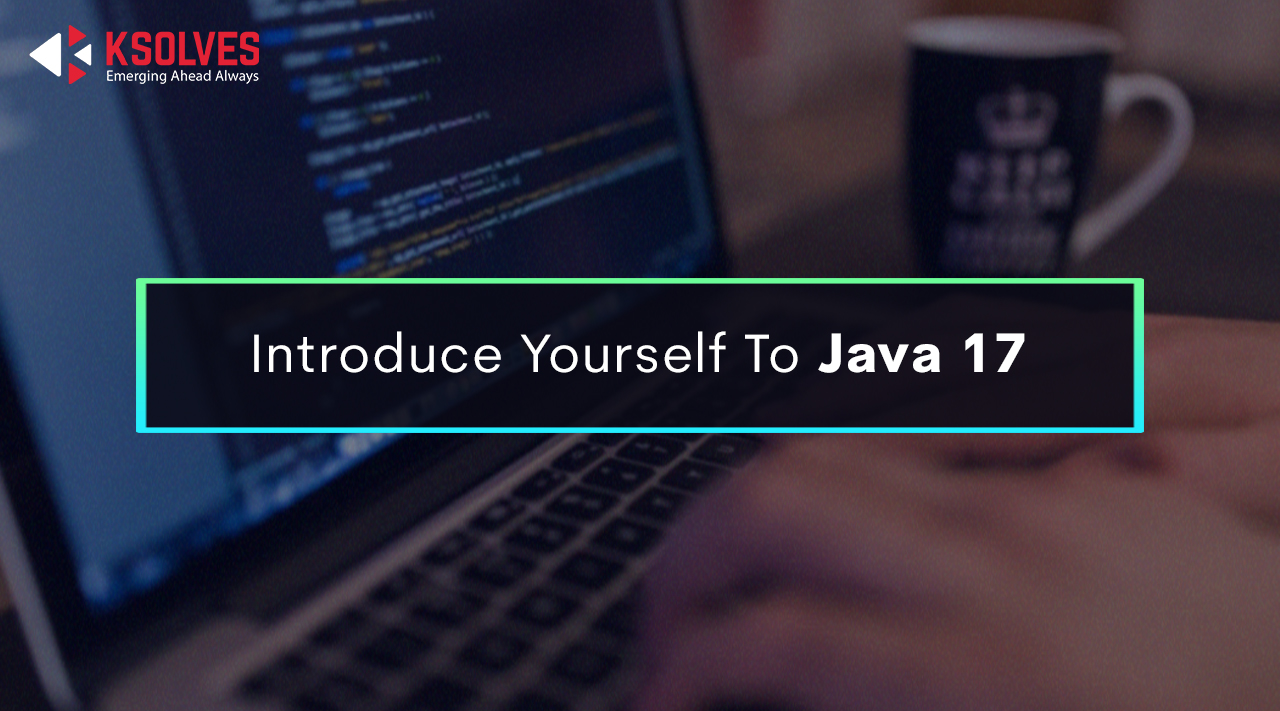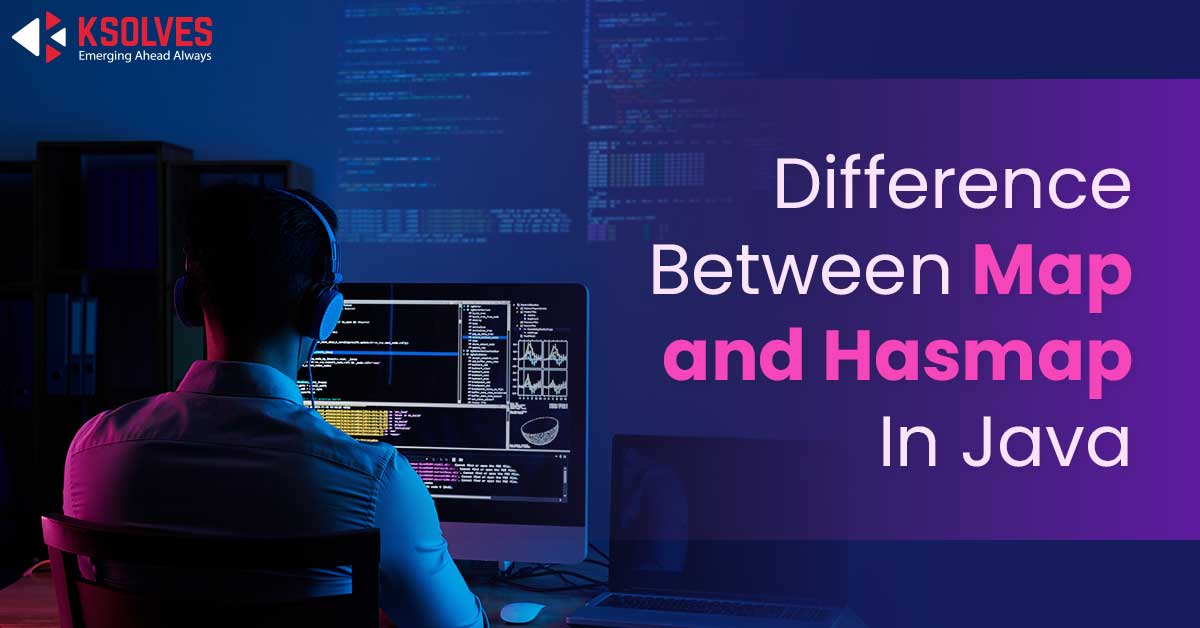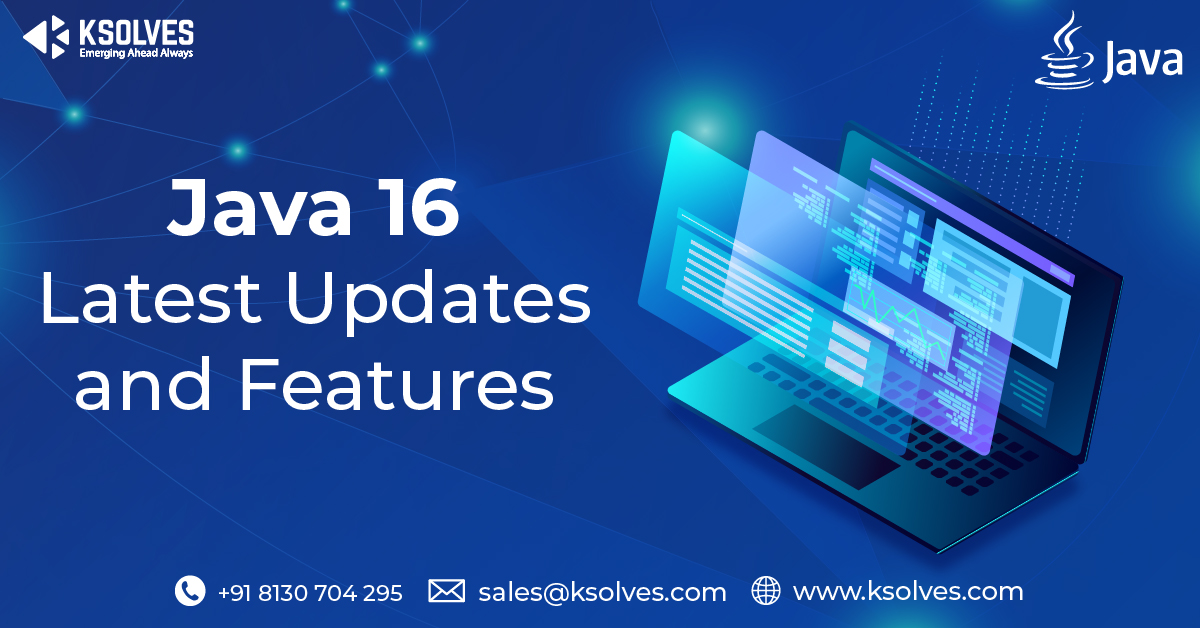10 Best Java Frameworks for Modern Web Application Development
Java
5 MIN READ
November 3, 2025
![]()

Java continues to be a cornerstone in the software development landscape, maintaining its position as one of the most widely used programming languages globally. According to the TIOBE Index, Java ranks fourth in popularity as of May 2025, reflecting its enduring relevance and widespread adoption.
Powering millions of applications worldwide, Java’s robustness, scalability, and versatility make it a preferred choice for a myriad of applications, from enterprise-level systems to mobile and cloud-based solutions. A significant factor contributing to Java’s success is its rich ecosystem of frameworks that streamline development processes, enhance maintainability, and accelerate project timelines.
In this blog, we delve into the top Java frameworks you should consider in 2025 and beyond. We’ll explore their unique features, advantages, and how they can empower developers to build efficient, scalable, and modern applications.
What is a Java Framework?
A Java framework is a pre-built collection of code, libraries, and tools that provides a structured approach to developing Java applications. Frameworks guide developers by offering standard practices, reusable components, and templates for common tasks. Unlike libraries, which provide specific functionality, frameworks dictate the overall architecture and flow of an application.
Why frameworks matter?
- Reduce boilerplate code and repetitive tasks.
- Improve application maintainability and scalability.
- Facilitate best practices like MVC, dependency injection, and modular design.
- Provide tools for testing, security, and database integration.
Benefits of Using Java Frameworks
Java frameworks streamline development, enforce best practices, and provide ready-to-use tools. They empower developers build scalable, secure, and high-performance applications faster and more efficiently.
- Accelerated Development
Java frameworks come with pre-configured modules, libraries, and reusable components that significantly reduce coding effort and development time. Developers can focus on business logic rather than reinventing the wheel, allowing for faster project delivery.
- Standardized Architecture
Frameworks enforce structured design patterns, such as MVC (Model-View-Controller), ensuring that applications are maintainable, scalable, and easier for teams to collaborate on. This consistency reduces errors and simplifies future updates.
- Built-in Features & Functionality
Most frameworks offer built-in support for common tasks like security, authentication, input validation, error handling, and testing. These features not only save time but also enhance the reliability and robustness of applications.
- Strong Community Support
Popular frameworks such as Spring, Hibernate, and Quarkus have active developer communities. Continuous updates, plugins, and community-driven solutions ensure developers always have access to the latest best practices and troubleshooting resources.
- Seamless Integration Capabilities
Java frameworks are designed to integrate effortlessly with databases, APIs, cloud platforms, and third-party tools. This flexibility makes it easier to build complex, enterprise-grade applications and adopt modern architectures like microservices and cloud-native solutions.
Top 10 Java Frameworks to Power Your Web Development
Discover the most popular Java frameworks that empower developers to write cleaner code, accelerate project delivery, and build scalable, maintainable applications with modern tools and best practices.
1. Spring
Spring is a highly modular Java framework that simplifies enterprise application development. It provides a comprehensive programming and configuration model, supporting both monolithic and microservices architectures, and promotes clean separation of concerns.
Top Features:
- IoC & Dependency Injection: Decouples components for modularity and testability.
- Spring Boot: Rapid setup of production-ready applications with embedded servers.
- Spring Security: Robust authentication and authorization framework.
- Spring Data: Simplifies database interactions and supports multiple data stores.
- Spring Cloud & Integration: Enables cloud-native apps and seamless system integration.
Advantages:
- Streamlines development with modular, pluggable components.
- Enhances testability and maintainability via DI and AOP (Aspect-Oriented Programming).
- Mature ecosystem with extensive libraries, plugins, and community support.
- Enterprise-ready features: transactions, batch processing, and messaging.
- Optimized for microservices, containerization, and cloud-native deployments.
2. Hibernate
Hibernate is a robust Object-Relational Mapping (ORM) framework for Java, facilitating seamless interaction between Java applications and relational databases. It abstracts the complexities of JDBC, allowing developers to work with Java objects while Hibernate handles the underlying SQL operations. As a JPA (Jakarta Persistence API) implementation, Hibernate provides a standardized approach to data persistence.
Top Features:
- ORM Mapping: Maps Java objects to database tables.
- HQL (Hibernate Query Language): Database-independent, object-oriented queries.
- Caching: First- and second-level caching for performance optimization.
- Lazy Loading: Loads associations only when accessed, saving resources.
- Automatic Schema Generation: Creates tables based on entity mappings.
Advantages:
- Database-agnostic design allows easy switching between databases.
- Reduces boilerplate JDBC code for faster development.
- Transparent persistence manages Java object storage automatically.
- Handles complex relationships (one-to-many, many-to-many) effortlessly.
- Strong community support ensures ongoing improvements and reliability.
3. Apache Struts
Apache Struts is a robust, open-source Model-View-Controller (MVC) framework for building Java-based web applications. It facilitates the development of flexible, maintainable, and secure applications by promoting a clear separation of concerns. Struts is maintained by the Apache Software Foundation and supports technologies like Java Servlets, JavaBeans, and XML.
Top Features:
- MVC Architecture: Separates model, view, and controller layers.
- ActionServlet: Core controller handling requests and responses.
- ActionForms: Encapsulates form data for easy data transfer.
- struts-config.xml: Centralized request-to-action mapping.
- Tag Libraries: Simplifies JSP form handling, validation, and i18n.
Advantages:
- Promotes clean, modular code for easier maintenance.
- Extensible via plugins for custom functionality.
- Integrates seamlessly with Java EE, REST, AJAX, and JSON.
- Built-in security features and validation support.
- Strong community support and continuous updates.
4. Google Web Toolkit
Google Web Toolkit (GWT) is an open-source Java framework that enables developers to build complex, high-performance web applications. With GWT, developers write client-side code in Java, which is then compiled into optimized JavaScript, HTML, and CSS for deployment.
Top Features:
- Java-to-JavaScript Compilation: Write in Java, run in any browser.
- Rich UI Widgets: Pre-built components for forms, tables, and layouts.
- Asynchronous RPC: Smooth client-server communication without page reloads.
- Cross-Browser Support: Ensures consistent behavior across browsers.
- IDE Integration: Works with Java IDEs like Eclipse for faster development.
Advantages:
- Increases productivity by leveraging Java for client-side development.
- Optimized code ensures faster application performance.
- Strong open-source community support and continuous updates.
- Proven reliability in enterprise applications like Google AdWords.
5. Play
Play Framework is an open-source, reactive web application framework for Java and Scala. It follows the Model-View-Controller (MVC) architectural pattern and is designed to provide high developer productivity with features like hot code reloading and a stateless, RESTful architecture. Play is built on Akka and Pekko, enabling asynchronous, non-blocking I/O for scalable applications.
Top Features:
- Reactive & Non-blocking I/O: Built on Akka and Pekko for high concurrency.
- Hot Code Reloading: Immediate reflection of code changes without server restart.
- RESTful APIs: Simplifies building and consuming REST services.
- Twirl Template Engine: Dynamic HTML generation with Scala-based templates.
- Built-in Testing: Support for unit and functional tests.
Advantages:
- Boosts developer productivity with hot reload and a clean MVC structure.
- Handles high loads efficiently with a reactive architecture.
- Supports modern web standards like REST and asynchronous I/O.
- Java and Scala support for flexible development.
- Integrated tooling for testing, templating, and DB migrations.
6. Grails
Grails is an open-source, full-stack web application framework that leverages the Groovy programming language atop the Java Virtual Machine (JVM). Designed for rapid development, Grails follows the “convention over configuration” paradigm, reducing boilerplate code and configuration overhead. It seamlessly integrates with Java technologies like Spring and Hibernate, providing a robust foundation for building scalable web applications.
Top Features:
- Convention Over Configuration: Minimizes configuration by adhering to sensible defaults.
- GORM (Grails Object Relational Mapping): Simplifies database interactions with dynamic methods for CRUD operations.
- Integrated Development Environment: Provides a ready-to-use environment with a built-in web server and libraries.
- Scaffolding Support: Automatically generates CRUD interfaces for domain classes.
- Plugin Ecosystem: Extensive plugins for adding features like authentication, REST APIs, and more.
Advantages:
- Accelerates application development with minimal configuration.
- Easily integrates with existing Java libraries and frameworks.
- Facilitates iterative development with support for agile methodologies.
- Boosts developer productivity through Groovy’s concise syntax and dynamic capabilities.
- Backed by an active community and comprehensive documentation.
7. JavaServer Faces (JSF)
JavaServer Faces (JSF) is a Java-based MVC framework for building component-based user interfaces for web applications. It simplifies UI development by providing a set of pre-built UI components, event handling, and data binding. JSF promotes a clean separation between the presentation layer and business logic, enhancing maintainability and scalability.
Top Features:
- Component-Based UI: Offers a rich set of reusable UI components.
- Event-Driven Model: Supports server-side event handling for user interactions.
- State Management: Manages UI component states across requests.
- Navigation Handling: Simplifies page navigation and flow control.
- Integration with Java EE: Seamlessly integrates with other Java EE technologies.
Advantages:
- Enhances maintainability by separating UI from business logic.
- Provides a comprehensive set of UI components.
- Supported by various IDEs for efficient development.
- Allows customization and extension of components.
- Part of the Java EE standard, ensuring consistency and reliability.
8. Vaadin
Vaadin is an open-source, full-stack Java framework designed for building modern web applications. It enables developers to create rich, interactive UIs entirely in Java, without the need for HTML, JavaScript, or CSS. Vaadin leverages a server-side architecture, ensuring that the majority of the UI logic runs securely on the server, while the client-side is rendered using Web Components. This approach simplifies development and enhances security.
Top Features:
- Server-Side UI Logic: Keeps UI logic on the server, reducing exposure to client-side vulnerabilities.
- Web Component-Based UI: Utilizes Web Components for client-side rendering, ensuring modern and reusable UI elements.
- Integrated Security: Built-in support for Spring Security, providing robust authentication and access control mechanisms.
- Data Binding: Simplifies data handling with automatic synchronization between UI components and backend data models.
- Extensive Component Library: Offers a wide range of pre-built UI components for rapid application development.
Advantages:
- Reduces the need for context switching between languages, enabling developers to build complex UIs effortlessly.
- Minimizes the risk of exposing sensitive business logic to the client.
- Adheres to Web Component standards, ensuring compatibility with modern browsers and frameworks.
- Easily integrates with existing Java applications and frameworks
- Backed by an active community and comprehensive documentation, facilitating continuous learning and support.
9. Dropwizard
Dropwizard is an open-source Java framework designed for developing high-performance RESTful web services. It integrates several mature libraries from the Java ecosystem into a lightweight package, enabling developers to focus on building applications without the overhead of extensive configuration. Dropwizard is optimized for microservices architectures, offering rapid development and deployment capabilities.
Top Features:
- Embedded Jetty Server: Provides a lightweight HTTP server for running applications without the need for an external servlet container.
- Jersey for REST: Utilizes Jersey, the JAX-RS reference implementation, for building RESTful web services.
- Jackson for JSON: Employs Jackson for efficient JSON processing and data binding.
- Metrics Library: Includes the Metrics library for monitoring application performance and health.
- Logback for Logging: Integrates Logback for flexible and performant logging.
Advantages:
- Enables quick setup and deployment of RESTful services, reducing time-to-market.
- Follows a convention-over-configuration approach, simplifying application setup.
- Offers built-in support for operational tools like health checks and metrics.
- Allows integration with additional libraries and modules to extend functionality as needed.
10. Apache Wicket
Apache Wicket is a component-oriented, server-side Java web framework that enables you to build robust and maintainable web applications using plain Java classes and HTML templates. It cleanly separates markup from behavior, supports stateful pages, and offers built-in security features. Wicket 10, for example, is built on Java 17 (compatible with Java 21), offering modern Java platform support.
Top Features:
- Component-Based Model: Pages & components are real Java objects (with encapsulation, inheritance, events).
- Pure HTML + Java: With no embedded script in markup, designers & developers can work in parallel.
- Built-in AJAX Components: Update parts of the UI without writing explicit JavaScript.
- Strong Typing & Compile-Time Safety: Components, pages, and models are type-safe.
- Integration Support: Works well with CDI/Bean Validation, JPA/Hibernate, Spring, and Guice.
- Security features: Secure by default, clean URLs, Content Security Policy (CSP) support in current versions.
Advantages:
- Enables modular, reusable UI components, which reduce duplication and improve maintainability.
- Less boilerplate in markup & configuration.
- WicketTester allows testing of components/pages without spinning up a full browser or servlet container.
- Good fit for applications needing stateful interaction, component reuse, and server-side control over UI rendering.
Conclusion
Java’s strength has always come from its vibrant ecosystem, and frameworks are at the heart of that ecosystem. Each framework we’ve explored solves specific challenges. The key is not just knowing what’s popular, but understanding which framework best aligns with your project’s size, complexity, and long-term goals.
With growing demands for microservices, cloud-native deployments, and scalable architectures, choosing the right Java framework can make the difference between a project that simply works and one that thrives.
At Ksolves, a leading Java development company, our skilled Java developers are adept at these frameworks and help you build robust, scalable, and high-performance applications tailored to your business needs.




AUTHOR
Java
Share with